If you’ve been stuck with runny noses, itchy eyes, and sneezing fits every spring or fall, you know how frustrating allergy symptoms can be. Astelin (azelastine) is a nasal spray that many people turn to when antihistamine pills don’t cut it. But is it the best option? And what else is out there that might work better-or cheaper-for you?
What is Astelin (azelastine)?
Astelin is a brand name for azelastine, an antihistamine nasal spray approved by the FDA for treating allergic rhinitis. It works directly in your nose, blocking histamine-the chemical your body releases when it reacts to pollen, dust, or pet dander. Unlike oral antihistamines that circulate through your bloodstream, Astelin targets the source. That means faster relief for nasal symptoms like congestion, sneezing, and post-nasal drip.
Most people start feeling better within 15 to 30 minutes after using it. Full effects usually show up after a few days of regular use. It’s approved for adults and kids as young as 12. The typical dose is one spray in each nostril twice a day. Some users report a bitter taste or mild nose irritation, but these side effects are usually mild and temporary.
How does Astelin compare to Flonase (fluticasone)?
Flonase is one of the most popular nasal sprays in the U.S. It’s a corticosteroid, not an antihistamine. That means it works differently: instead of blocking histamine, it reduces inflammation in the nasal passages. This makes it great for long-term control of allergy symptoms, especially if you have chronic congestion or swelling.
Here’s how they stack up:
| Feature | Astelin (Azelastine) | Flonase (Fluticasone) |
|---|---|---|
| Type | Antihistamine | Corticosteroid |
| Onset of Action | 15-30 minutes | 1-2 days (up to 1 week for full effect) |
| Best For | Sneezing, runny nose, itchy nose | Congestion, inflammation, long-term control |
| Side Effects | Bitter taste, nasal dryness, occasional nosebleeds | Nasal dryness, throat irritation, occasional nosebleeds |
| Age Approval | 12+ | 2+ |
| Over-the-Counter? | No (prescription only) | Yes (Flonase Sensimist and generic versions) |
| Cost (30-day supply) | $120-$180 (brand), $60-$100 (generic azelastine) | $20-$40 (OTC), $10-$20 (generic fluticasone) |
If your main issue is sneezing and watery eyes, Astelin often wins. If you’re dealing with a blocked nose that won’t clear, Flonase is usually more effective. Many doctors even prescribe them together for stubborn allergies-especially if symptoms are severe or year-round.
What about Nasacort (triamcinolone)?
Nasacort is another corticosteroid nasal spray, similar to Flonase. It’s available over the counter and works well for congestion, sneezing, and runny nose. Unlike Astelin, it doesn’t offer fast relief-it takes a few days to build up. But once it does, it’s reliable.
Compared to Astelin, Nasacort is cheaper and doesn’t leave a bitter aftertaste. But it’s not as strong for itching or sudden flare-ups. If you’re looking for daily maintenance and don’t mind waiting a week to feel better, Nasacort is a solid budget pick.
Is Otrivin (oxymetazoline) a good alternative?
Otrivin is a decongestant nasal spray. It shrinks swollen blood vessels in your nose, giving you instant relief from congestion. Sounds great, right? But here’s the catch: if you use it for more than three days in a row, you can get rebound congestion. Your nose gets worse when you stop using it.
Astelin doesn’t cause this. That’s why Otrivin is only meant for short-term use-like during a cold or acute flare-up. It’s not a substitute for Astelin if you’re managing allergies long-term. Think of it as a temporary fix, not a treatment.
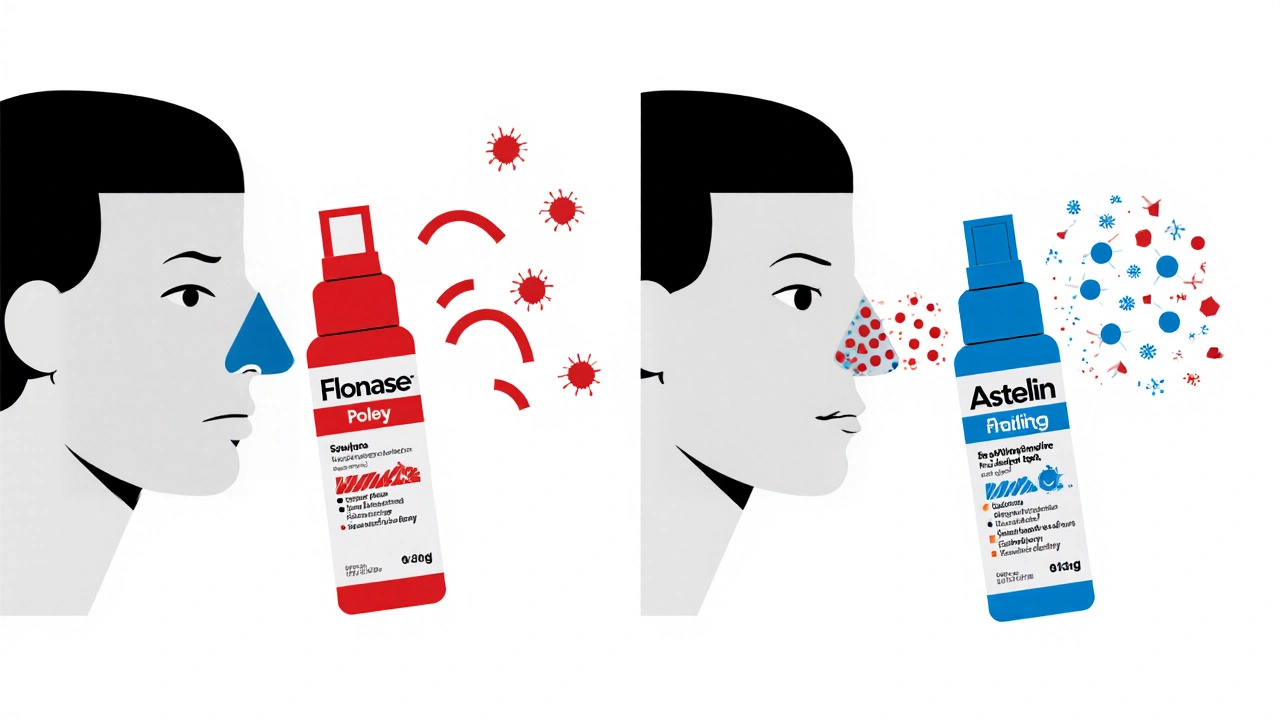
What about oral antihistamines like Zyrtec or Claritin?
Oral antihistamines like cetirizine (Zyrtec) and loratadine (Claritin) are convenient. You just swallow a pill once a day. They work well for itchy eyes, sneezing, and hives. But they’re not as effective for nasal congestion.
Astelin beats them for stuffy noses. It also avoids drowsiness (unlike older antihistamines like Benadryl). If your main problem is congestion and you’re tired of pills that don’t touch your nose, Astelin is a step up. But if your allergies are mild and mostly affect your eyes or skin, a daily pill might be enough.
Is there a generic version of Astelin?
Yes. Generic azelastine nasal spray is widely available and costs about half the price of the brand name. It’s the same active ingredient, same dosage, same effectiveness. Many pharmacies stock it, and insurance usually covers it. If you’re paying full price for Astelin, you’re likely overpaying.
Check with your pharmacist for the generic. Make sure it’s azelastine hydrochloride 0.15% nasal spray. The delivery system might feel different, but the results are identical.
What about newer options like Dymista?
Dymista is a combo spray that contains both azelastine and fluticasone-the same two ingredients in Astelin and Flonase, mixed together. It’s designed for people who need both fast relief and long-term control. You get the quick action of an antihistamine and the anti-inflammatory power of a steroid in one spray.
It’s more expensive than using generic azelastine and Flonase separately. But if you’re already using both, Dymista simplifies your routine. It’s also FDA-approved for kids as young as 12. For people with moderate to severe allergies who hate juggling two sprays, Dymista can be a game-changer.
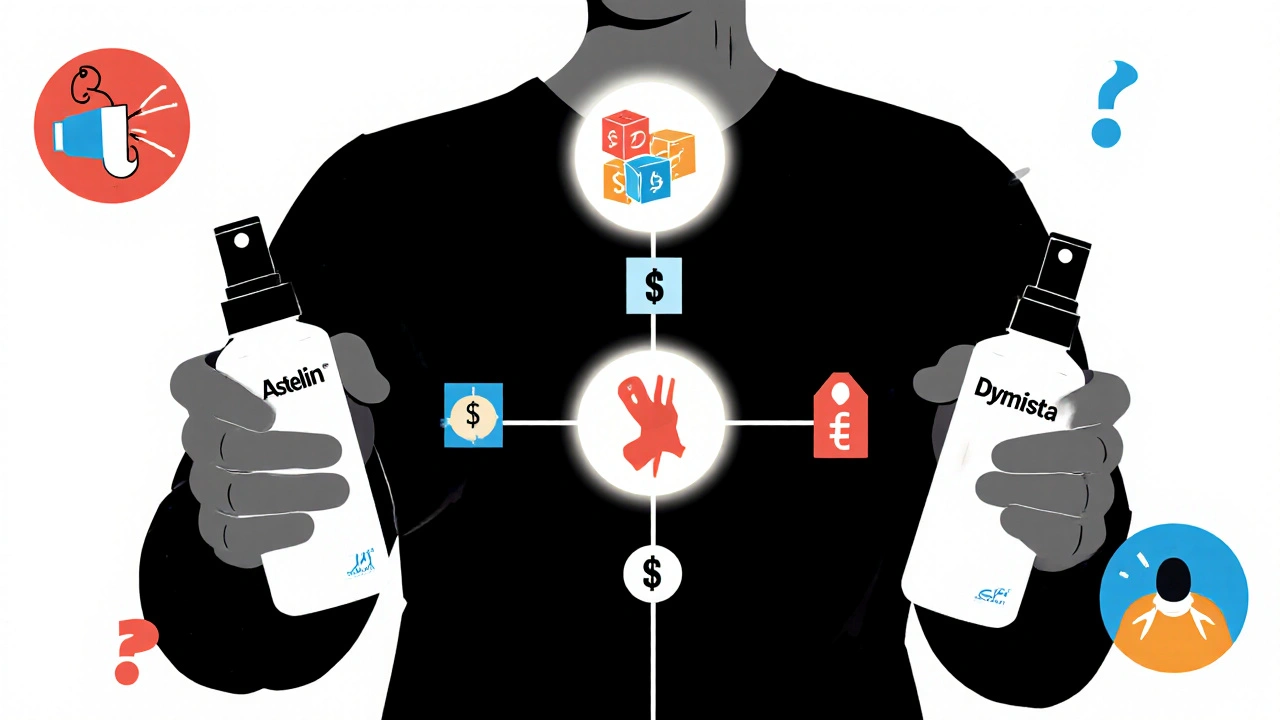
Who should avoid azelastine?
Azelastine isn’t for everyone. Avoid it if you’ve had an allergic reaction to it in the past. If you have nose sores, recent nasal surgery, or a nasal infection, wait until you’re healed before using it.
It’s generally safe during pregnancy and breastfeeding, but talk to your doctor first. Also, don’t combine it with other nasal sprays unless your doctor says so. Mixing can increase side effects or reduce effectiveness.
Real-world advice: Which one should you pick?
Here’s a simple way to decide:
- If your biggest problem is sneezing, itching, or a runny nose-go with generic azelastine (Astelin).
- If your nose is constantly blocked and you need long-term control-try Flonase or Nasacort.
- If you have both congestion AND sneezing, and you’re willing to pay more for convenience-ask your doctor about Dymista.
- If your symptoms are mild and mostly affect your eyes or throat-stick with Zyrtec or Claritin.
- If you need fast relief for a sudden flare-up (but not daily)-use Otrivin for no more than 3 days.
Many people start with OTC options like Flonase or Claritin. If they don’t work well enough, they move to prescription sprays like Astelin. That’s normal. There’s no single ‘best’ spray-it depends on your symptoms, budget, and how your body responds.
When to see a doctor
If you’ve tried two or three different allergy treatments and nothing gives you real relief, it’s time to see an allergist. You might have non-allergic rhinitis, sinusitis, or even nasal polyps. These need different treatments than standard antihistamines or steroids.
Also, if you’re using nasal sprays daily for more than six months without improvement, get checked. Long-term reliance on sprays without diagnosis can mask underlying issues.
Is Astelin better than Flonase for allergies?
It depends on your symptoms. Astelin works faster and is better for sneezing and runny nose. Flonase is stronger for congestion and long-term control. Many people use both together for full relief.
Can I use Astelin every day?
Yes. Astelin is designed for daily use. The standard dose is one spray in each nostril twice a day. It doesn’t cause rebound congestion like decongestant sprays do.
Is there a cheaper alternative to Astelin?
Yes. Generic azelastine nasal spray is just as effective and costs about half the price of the brand-name version. Most pharmacies carry it, and insurance usually covers it.
Does Astelin make you drowsy?
Some people report mild drowsiness, but it’s less common than with oral antihistamines like Benadryl. If you feel sleepy, try using it at night. Don’t drive or operate heavy machinery until you know how it affects you.
Can kids use Astelin?
Yes. Astelin is approved for children 12 years and older. For younger kids, Flonase and Nasacort are approved for ages 2 and up. Always check with a pediatrician before starting any nasal spray.
How long does it take for Astelin to work?
Most people feel relief within 15 to 30 minutes. Full benefits usually appear after 3 to 7 days of consistent use. Don’t stop using it if you don’t feel better right away.
Next steps
Start by identifying your worst symptom. Is it sneezing? Runny nose? Blocked nose? Then match it to the treatment that targets it best. Try a generic azelastine spray if you want fast relief without the brand price. If congestion is the issue, go OTC with Flonase or Nasacort. And if you’re still struggling after two weeks, book a visit with an allergist. You don’t have to live with constant sniffles.

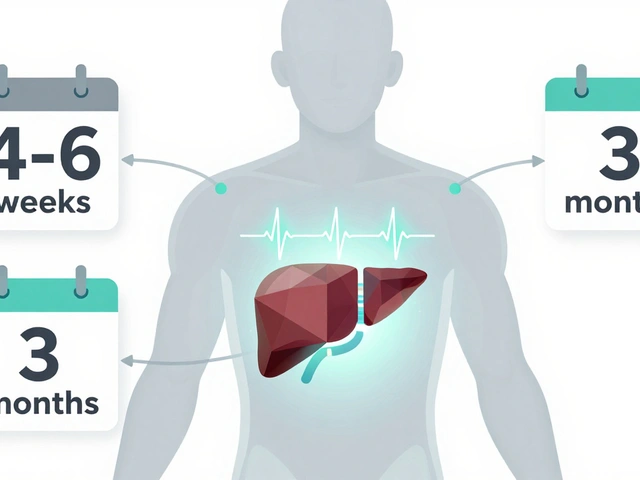


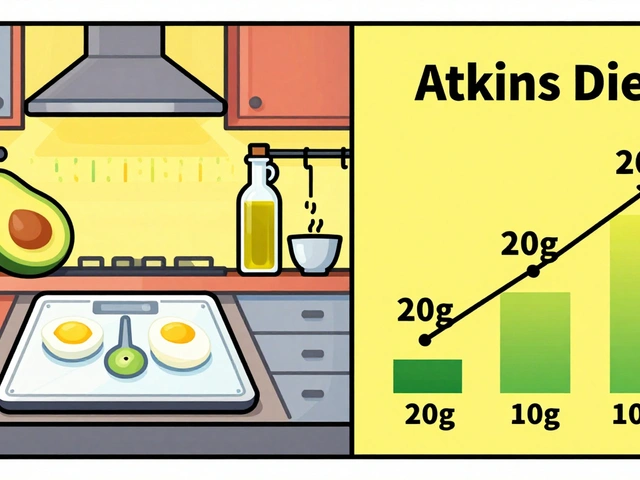
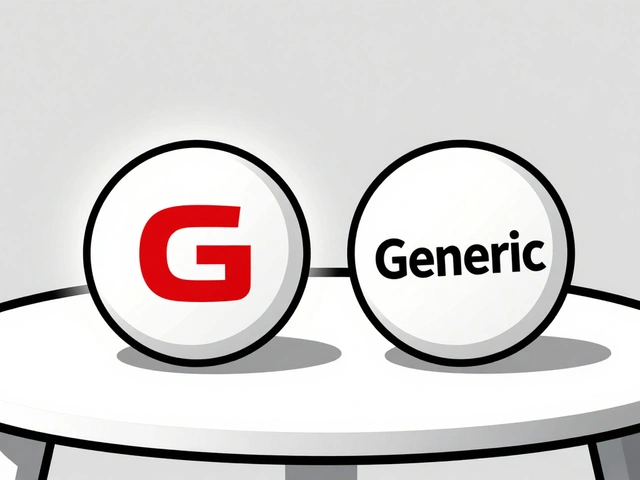
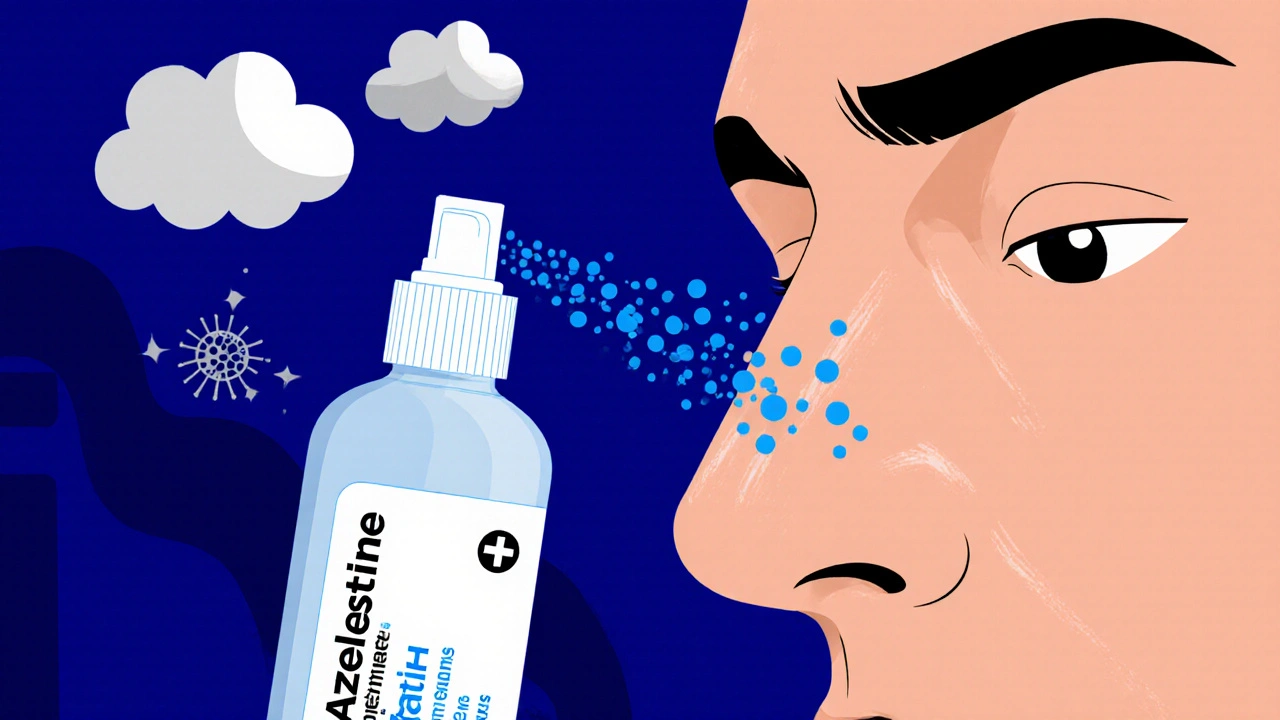
Write a comment